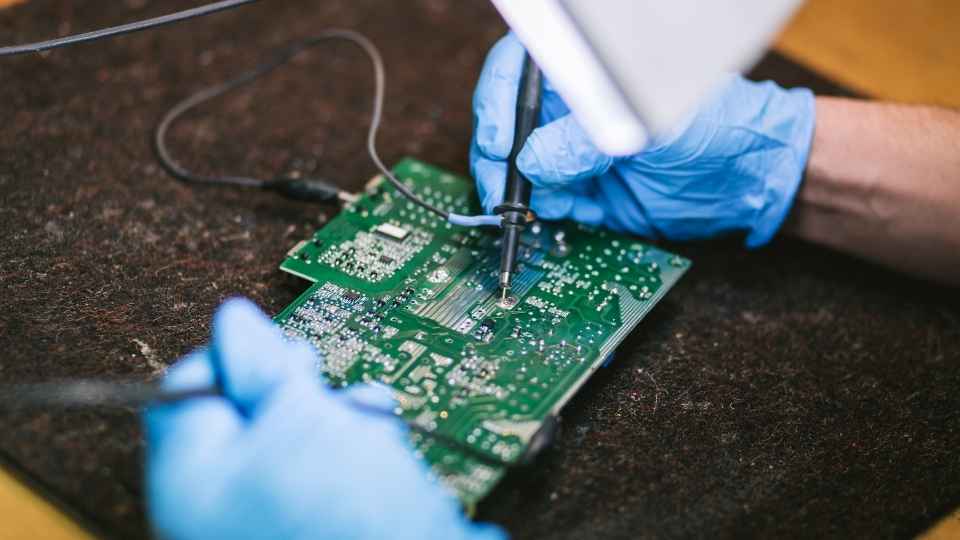
In the realm of technology, where innovation knows no bounds, a new chapter is unfolding - one that promises to redefine our perception of reality.
As we embark on this journey into the next decade, it is the display engineer who holds the key to unlocking the full potential of augmented and virtual reality (AR/VR) experiences.
With their curious minds, analytical prowess, and vast knowledge in display technology, they are poised to shape a future where freedom of exploration knows no limits.
Let us delve into the world of AR/VR displays and explore how they will define the next decade.
Key Takeaways
- Advancements in AR/VR displays have led to higher resolutions, faster refresh rates, and improved color accuracy.
- MicroLED displays offer advantages such as higher brightness levels and improved color accuracy.
- Challenges in AR/VR display engineering include achieving high-resolution displays, expanding the field of view, and designing lightweight and comfortable headsets.
- AR/VR displays revolutionize user experiences by immersing them in virtual worlds and creating a sense of presence.
The Evolution of AR/VR Displays
The evolution of AR/VR displays has become a pivotal area of focus, as it holds the potential to redefine user experiences and shape the trajectory of technological advancements in the next decade. With each passing year, we witness remarkable progress in display technology, enabling us to immerse ourselves in virtual worlds with greater clarity and realism. From bulky headsets with limited field-of-view to sleek, lightweight devices offering wider perspectives, the journey of AR/VR displays has been nothing short of extraordinary.
As engineers continue to push boundaries and explore new possibilities, we can expect even more advancements in the coming years. Higher resolutions, faster refresh rates, enhanced color accuracy – these are just some areas where significant improvements are anticipated. The ultimate goal is to create displays that seamlessly blend virtual content with our physical surroundings, providing users with an unparalleled sense of freedom and immersion.
Such advancements will not only revolutionize entertainment but also have far-reaching implications across various industries. Imagine architects visualizing their designs at scale or doctors performing complex surgeries through augmented reality overlays. The potential applications are limitless.

Advancements in Display Technology for AR/VR
Significant advancements in technology for augmented and virtual reality are poised to shape the trajectory of the upcoming decade. As we enter a new era of immersive experiences, the demand for high-quality AR/VR displays is growing rapidly. Display technology plays a crucial role in delivering realistic and captivating visuals, making it an essential component of AR/VR devices.
One of the most exciting developments in display technology is the arrival of microLEDs. These tiny, self-emitting diodes offer several advantages over traditional LCDs and OLEDs, including higher brightness levels, improved color accuracy, and greater energy efficiency. MicroLED displays have the potential to provide users with incredibly sharp and vibrant images, enhancing their immersion in virtual worlds.
In addition to microLEDs, other promising advancements include improvements in resolution, field of view (FOV), refresh rate, latency reduction, and eye tracking capabilities. These innovations aim to address some of the current limitations faced by AR/VR displays and enhance user comfort and satisfaction.
Transitioning into challenges and opportunities in AR/VR display engineering...
Challenges and Opportunities in AR/VR Display Engineering
Advancements in AR/VR technology present a range of challenges and opportunities for engineers working on immersive visual experiences. As the demand for more realistic and compelling virtual environments continues to grow, display engineers are tasked with overcoming several key obstacles:
Resolution: Achieving high-resolution displays that can seamlessly integrate with AR/VR systems is crucial for delivering an immersive experience.
Field of View: Expanding the field of view to create a wider viewing angle remains a challenge, as current technologies often have limitations in this area.

Comfort and Weight: Designing lightweight and comfortable headsets is essential to enhance user comfort during extended periods of use.
Power Efficiency: Developing energy-efficient displays is vital to extend battery life and reduce the strain on users' eyes.
The Impact of AR/VR Displays on User Experience
AR/VR technology has the potential to revolutionize user experiences by immersing them in virtual worlds and enhancing their perception of reality. The impact of AR/VR displays on user experience cannot be overstated.
These displays have the ability to transport users to new realms, allowing them to interact with digital content in ways previously unimaginable. Whether it's exploring ancient civilizations or battling aliens in outer space, AR/VR displays offer a level of freedom and escapism that is unparalleled.
By seamlessly blending the virtual and physical worlds, these displays create a sense of presence that can truly transport users to another dimension. As display engineers continue to innovate and improve upon existing technologies, we can expect even more immersive and realistic experiences in the next decade.
The possibilities are endless, and the future of AR/VR displays holds great promise for those seeking ultimate freedom in their digital journeys.
Future Trends and Predictions for AR/VR Display Development
The evolution of AR/VR technology is poised to redefine user experiences by introducing innovative features and enhancing immersion. As we look towards the future, there are several exciting trends and predictions for AR/VR display development that are worth exploring:

Higher resolution displays: The demand for sharper visuals in AR/VR experiences will drive the development of higher resolution displays, allowing users to see more detail and realism in virtual environments.
Lighter and more comfortable headsets: Manufacturers are working on creating lighter and more ergonomic headsets to improve comfort during extended use, making AR/VR experiences feel even more immersive.
Wide field of view: One challenge in AR/VR displays is achieving a wider field of view that mimics human vision. Advances in optics and display technologies will enable larger FOV, providing users with a more natural viewing experience.
Eye-tracking technology: Integrating eye-tracking into AR/VR displays will allow for enhanced interaction and intuitive control, as well as improved rendering techniques such as foveated rendering to optimize performance.
With these developments on the horizon, it's evident that the future of AR/VR display technology holds immense potential to transform how we perceive and interact with digital content, giving individuals the freedom to explore limitless virtual worlds with unparalleled realism.
Frequently Asked Questions
What Are the Main Challenges in Designing Ar/Vr Displays for Optimal User Experience?
The main challenges in designing AR/VR displays for optimal user experience include ensuring comfortable and immersive visuals, minimizing motion sickness, enhancing resolution and field of view, reducing latency, improving ergonomics, and balancing cost-effectiveness with cutting-edge technology advancements.
How Does the Resolution of Ar/Vr Displays Affect the Overall Visual Quality?
The resolution of AR/VR displays plays a crucial role in determining the overall visual quality. Higher resolutions result in sharper and more realistic images, enhancing the immersive experience for users. However, increasing resolution poses challenges such as higher processing power requirements and potential trade-offs in other aspects like refresh rate or field of view.

Are There Any Specific Display Technologies That Are Currently Being Developed for Ar/Vr Applications?
Yes, there are specific display technologies currently being developed for AR/VR applications. These include OLED displays, microLED displays, and holographic displays. Each technology has its own unique advantages and challenges in terms of resolution, refresh rate, and field of view.
What Are the Potential Health Risks Associated With Prolonged Use of Ar/Vr Displays?
The potential health risks associated with prolonged use of AR/VR displays include eye strain, headaches, motion sickness, and disorientation. These issues may arise due to the immersive nature of the technology and the constant visual stimulation it provides.
How Do Ar/Vr Displays Differ From Traditional Displays in Terms of Power Consumption and Battery Life?
AR/VR displays differ from traditional displays in power consumption and battery life. With AR/VR, the demand for processing power and graphics rendering is significantly higher, resulting in shorter battery life compared to traditional displays.
 Basic Electronics ConceptsEssential ToolsCircuit Design BasicsMicrocontrollersDIY Electronics ProjectsRoboticsPrivacy PolicyTerms And Conditions
Basic Electronics ConceptsEssential ToolsCircuit Design BasicsMicrocontrollersDIY Electronics ProjectsRoboticsPrivacy PolicyTerms And Conditions
